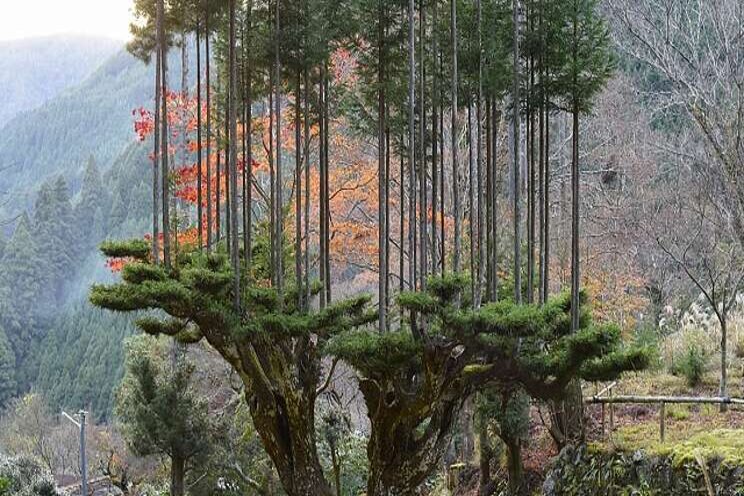Daisugi: Creating a tree platform for other trees
Added on 21 October 2020

The technique was developed in Kyoto as a means of solving a seedling shortage and was used to create a sustainable harvest of timber from a single tree. Done right, the technique can prevent deforestation and result in perfectly round and straight timber known as taruki, which are used in the roofs of Japanese teahouses. Smaller, decorative daisugi also exist around Japan but maintaining them can be expensive and time-consuming. Below, gardeners from Komori Zouen show before and after pictures illustrating the technique

Photos courtesy Komori Zouen
Below is a forest of smaller daisugi, contrasted against fall foliage in Kyoto:

Photograph courtesy Ai Hirakawa
Daisugi has also been the subject of Japanese painting. Below is a scroll of the famous Kitayama Daisugi, painted by Housen Higashihara (1886 - 1972).

A scroll by artist Housen Higashihara, spotted on auction for roughly $300
Source: Spoon-Tamago
Header photograph courtesy Yusuke Narita
Source: Spoon-Tamago
More news















